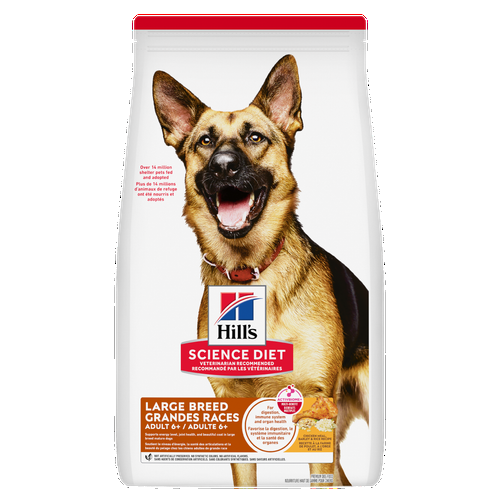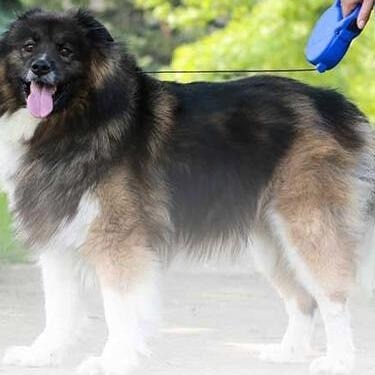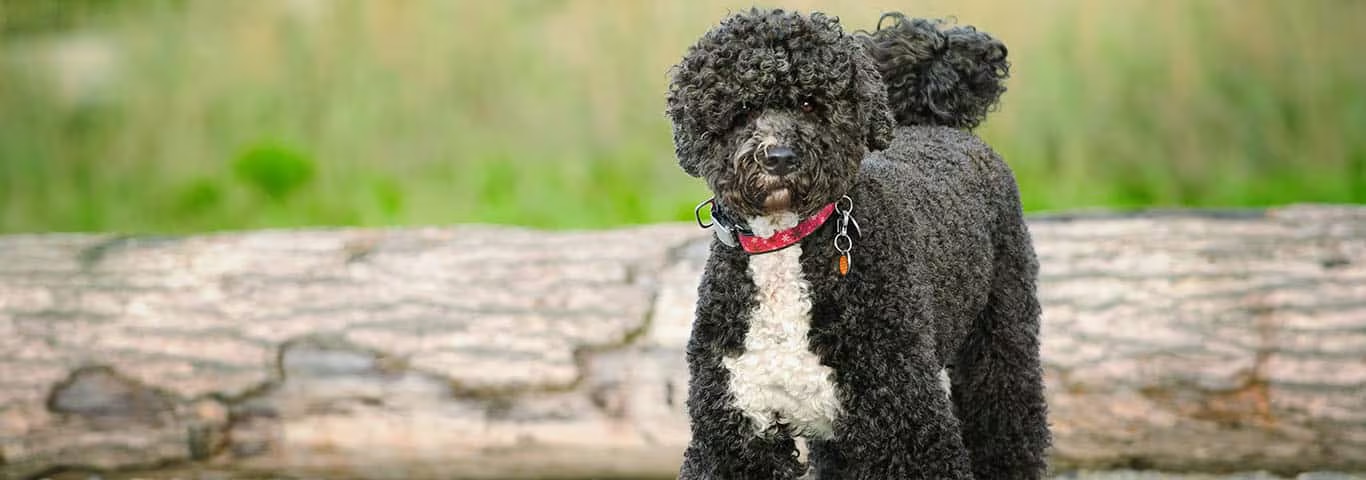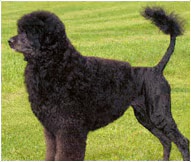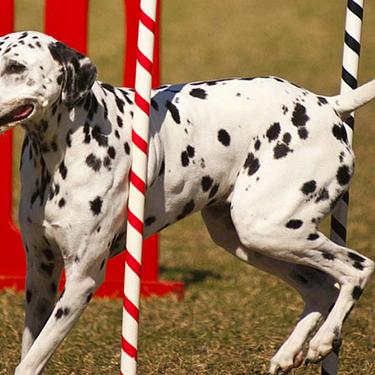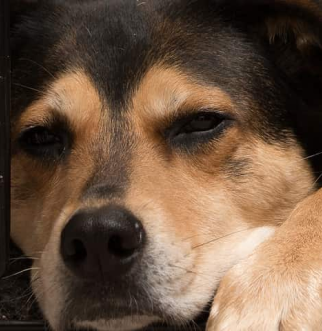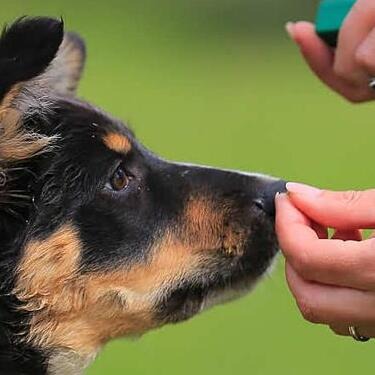Males are 20 to 23 inches at the shoulder; females are smaller at 17 to 21 inches tall. The body is well-muscled and built for work. The head is longer than the muzzle and the ears are dropped. Water dogs generally mature at 1 to 2 years of age, although they reach their full size around 6 to 8 months.
The Portuguese Water dog has two varieties of coat. One is compact curls, and the other is wavy with a slight sheen. These dogs have no undercoat and do not shed. They are clipped in either a "lion clip" (face and hindquarters shaved) or a "retriever clip" (hair cut evenly to about one inch). The coat color is black, white or various shades of brown. Combinations of black or brown and white are also seen. Dogs with black, white, or black and white hair have bluish skin.
The Portuguese Water Dog requires frequent grooming to prevent mating and tangling. Brushing and combing every day is highly advised, and they require frequent baths and clippings. This is a high maintenance dog.
Portuguese Water dogs are active dogs, requiring a high level of physical activity given their working history. Although they are independent in nature, they do not make good kennel dogs and prefer being with their guardians. Water dogs are highly intelligent and need activities to keep them occupied to prevent destructive behavior such as chewing and digging. They need to be kept in a large, fenced-in backyard to prevent them from roaming.
Water dogs are very smart and independent. They require time outdoors and, true to their name, they love water.
Portuguese water dogs need a large amount of interaction with people. They tolerate other dogs and cats well if raised with them. However, other pets such as rodents, birds, and reptiles should be kept out of reach.
Some breeders tout Portuguese water dogs as hypoallergenic because they do not shed. This may or may not be true depending on the person and his or her sensitivity. Before investing in a water dog, have the allergic person visit the breeder's home and interact with the dogs to determine the level of tolerance.
Portuguese water dogs are ideal for guardians who want a medium-sized, intelligent, active dog. They make good watchdogs, but their size keeps them from being capable guard dogs. Water dogs are mistrustful of strangers.
Portuguese water dogs typically live from 10 to 14 years.
The Portuguese Water Dog is an ancient breed believed to have originated on the central Asiatic steppes around 700 BC. How they arrived in Portugal, whether brought by the Berbers (who became the Moors in later centuries) or the Goths, is up for dispute. The latter may have some validity because the Ostrogoths' dogs eventually became the poodle, and the poodle and Portuguese Water Dog have many characteristics in common.
Portuguese Water Dogs were used for herding fish into nets and retrieving broken nets and tackle that fell overboard; they also acted as couriers between fishermen and from ship to shore. As fishing declined in the early 20th century, the breed began to suffer the same fate as the Portuguese fishermen. Dr. Vasco Bensuade began efforts to save the breed in the 1930s. In 1958, two Portuguese Water Dogs entered the United States in a rare breed exchange program. The popularity of the Water Dog grew slowly but steadily. On January 1, 1984, the Portuguese Water Dog was accepted into the working group by the American Kennel Club.
The Portuguese Water Dog excels in obedience and is a member of the working group. The breed makes a delightful, active companion.
Adopt a pet. Change a life.
Are you prepared to adopt a pet? Use these tools to make sure you are ready for the commitment.
Adopt a pet. Change a life.
Are you prepared to adopt a pet? Use these tools to make sure you are ready for the commitment.


